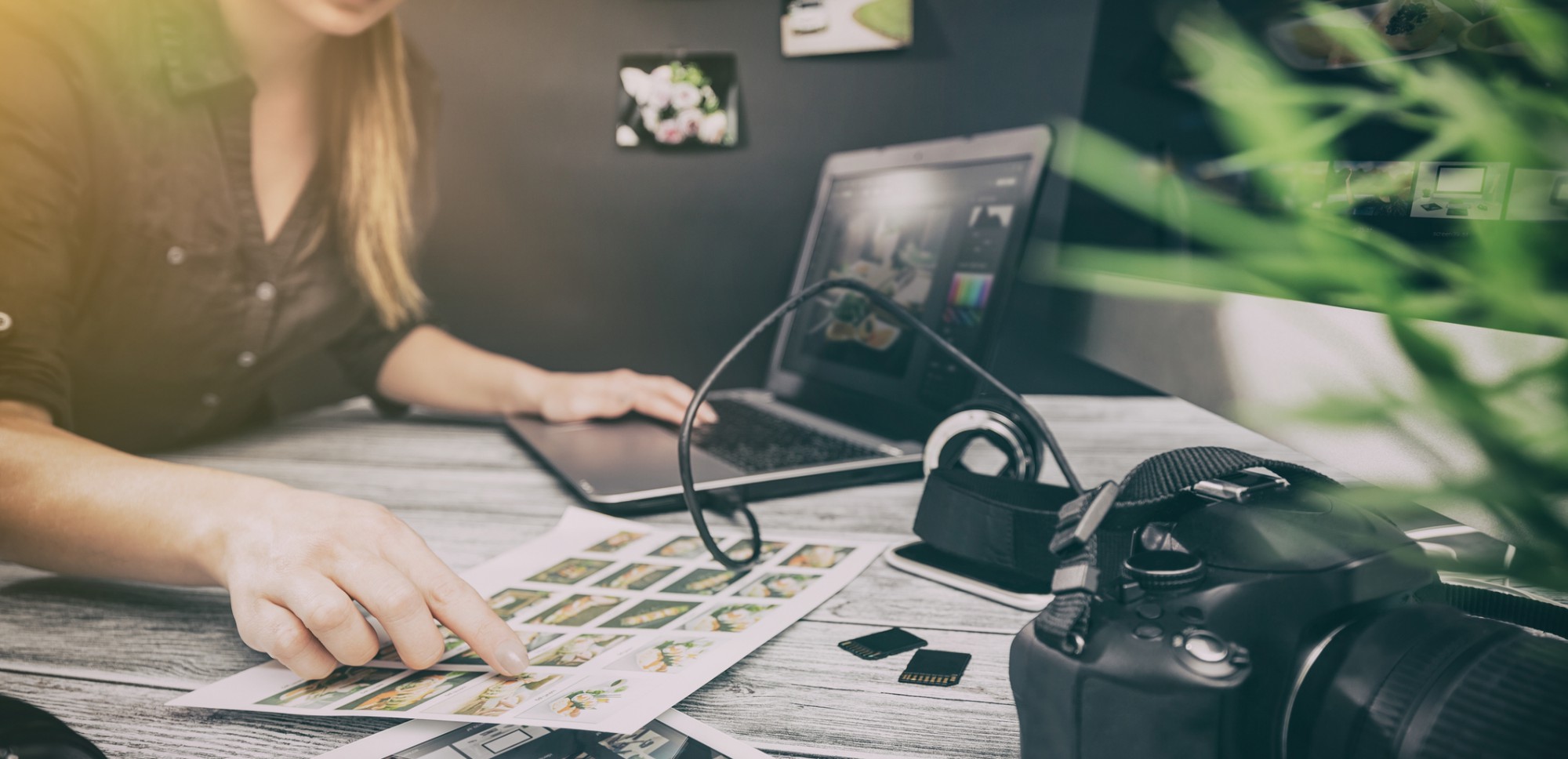The tips we have seen in the previous post, on how to improve your photo in your CV, are all very well, but pointless if you, or the person holding the camera, don’t know how to take a photo. Here are some recommendations that will help you if you have some ability with your camera:
Put the camera on a tripod or support it properly otherwise. There is nothing worse than a blurred photo.
Work with a telephoto lens; 70 to 200 mm focal length is best. If the lens is close to you and at a wide angle, however, the face will be very distorted. Better that the camera is some way away and focuses in on you with the zoom to maintain the proportions of your face.
Lighting must be gentle and illuminate three-quarters of your face, so that you have volume in the face and brightness in both eyes. If the light that reaches your face from above is somewhat fractured, better still: the shading from the nose will be more natural. This is not as complicated as it might sound. A white-curtained window on a sunny day might be enough to achieve a gentle lighting effect (careful about the background detail!).
Don’t use the camera’s automatic mode, above all if you are inside, because the camera will probably use the flash or increase ISO sensitivity by too much. If you daren’t use Manual mode (M), Program mode (P) is found on most cameras and is a way of taking photos semi-automatically, while still controlling the camera.
Such photos are normally better with more rather than less light. If you don’t know how to do this with your camera, look for the square icon with which you can increase the amount of light in the photo (over-exposure).
If you know how to handle the camera, open the iris to help the light enter and blur the background by losing field depth.
If you see the colors are dominating too much (normally this is with warm and cold colors), correct this defect by selecting white balance – WB – in the camera. This corresponds to the low light with which you are taking the photo. It’s very simple; you just need to choose the icon with this WB symbol, which relates to the existing light source. Check if it is better than when the white balance is on automatic.
If you are inside, to avoid blurred or dark (under-exposed) photography it will be convenient to increase the ISO. Up to 400, the majority of cameras conserve quality well, as do more modern ones at 800 to 1600. Don’t worry too much about a slight loss of definition, since you are not going to enlarge the photo excessively (when you would most notice it).
As mentioned in our first post, we would advise you against using the camera’s flash. It flattens the image and generates very unwelcome brightness in the face.
If neither you nor anyone else close to you can be considered expert photographers, don’t rule out the possibility of going to a photography studio. In half an hour, you can emerge with several good quality shots.
Tools for retouching your photos
Now that you have the almost perfect photo, the moment to edit it arrives.
We are not suggesting face-lifting or other abuses with Photoshop here, but on many occasions a slight improvement to the photo can help your case; above all, improving the light and color, and (why not?) removing that imperfection in the your face that comes out to play at the worst possible moments.
In the computer
As well as the already well-known Adobe Photoshop, and its similar free counterpart, Gimp, there are other simpler programs you can use and achieve more than satisfactory results with:
Photoscape, a very simple program in which you can improve the photograph a lot, easily, and it’s free!
Picasa, the highly intuitive Google program, not only for editing photos but cataloging and publishing them.
Lunapic, a program you don’t have to download, but instead use on its website, to which you can upload, edit and save photos from.
From your smartphone
If you want to touch up your photo with a mobile phone – we do not recommend this, by the way – all so-called smartphones have very simple tools in their menus for editing photo albums, including cropping images and improving light and color.
If you prefer something more advanced, there are applications you can download for touching up photos, such as Snapseed and Photo Editor, with which you can produce a more interesting image in an entertaining manner and without going over the top. The use of creative filters in a photo for your CV or professional profile is not recommended, however.
We trust these tips will help you improve your photo and communicate a feeling of confidence and presence, something all companies are looking for, to add to the fantastic abilities you already offer.
 Santi García, photography lecturer at EFMAD (@gondebel)
Santi García, photography lecturer at EFMAD (@gondebel)


